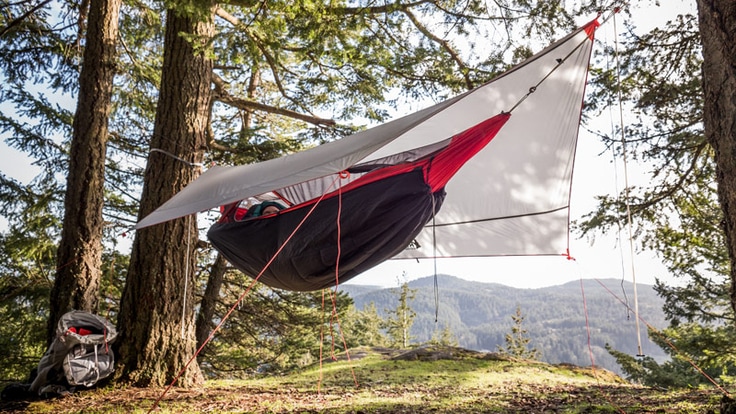For years, campers and backpackers defaulted to the tent as their overnight shelter. The humble hammock, though, is an alluring alternative—and an increasingly popular one. If you've enjoyed relaxing in a hammock, then it might be time to give camping in one a try. In this article, we'll answer the question, "what is hammock camping," and talk about what you'll need to successfully set up your hammock for camping.
What is Hammock Camping?
Hammock camping simply means you're swapping out your typical tent in favor of a hammock and a few helpful accessories where you can comfortably sleep outdoors overnight. Many backpackers and bikebackers enjoy camping with hammocks because they are so lightweight and take up little space in a pack. Hammock campers also enjoy a higher vantage point and are spared the discomfort of sleeping on sloped or rocky ground. A couple of sturdy trees are all you need.
What You Need to Hammock Camp
You can create a DIY camping (or backpacking) setup by adding components to your current hammock, or by purchasing a prepackaged "hammock tent" system that comes with most of the items below:
- A hammock, if you don't already have one
- A suspension system with wide (tree-friendly) straps
- An insulating underquilt or sleeping pad (sold separately from tent systems)
- A rain tarp
- Some bug netting
Shop Hammocks and Hammock Accessories
It's possible to forgo the rain tarp, bug netting and/or underquilt, though it's nice to have them handy should conditions require them. Also, even though these (and other) accessories often work with multiple hammock brands and models, you'll need to double-check compatibility if you are building out your own hammock-camping setup.
Here's some more detail:
Your hammock: Just about any hammock can be the centerpiece of your camping system. If you are buying one, the key consideration is its comfort, though weight will also be a factor if you'll be backpacking. You can find innovative designs beyond the classic sling, too. Try lying down in a few for comparison. Read How to Choose a Hammock for details about size and material differences to consider.
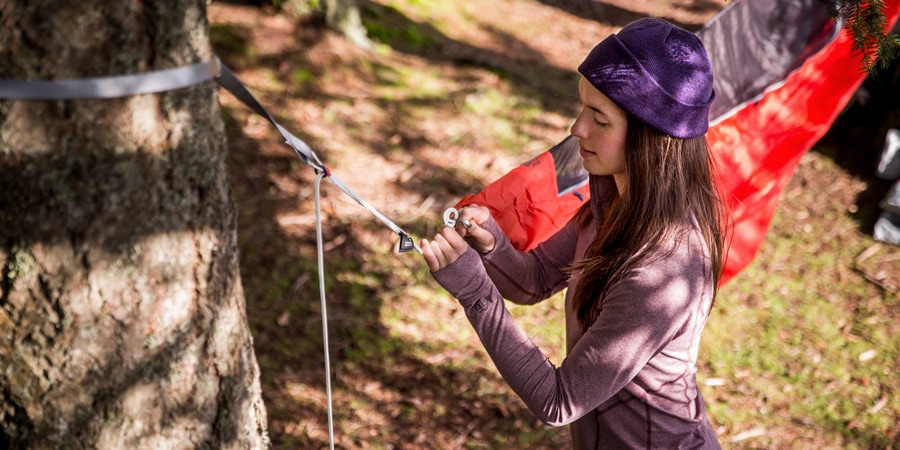
Suspension system: Bare ropes are a no-no because of potential damage to tree bark, so a good suspension system (typically sold separately from the hammock) with wide straps is essential. Strap systems also make setup a breeze—no special knots required. Note that a few hammock tent systems include thick ropes with protective sleeves that are designed to protect tree bark.
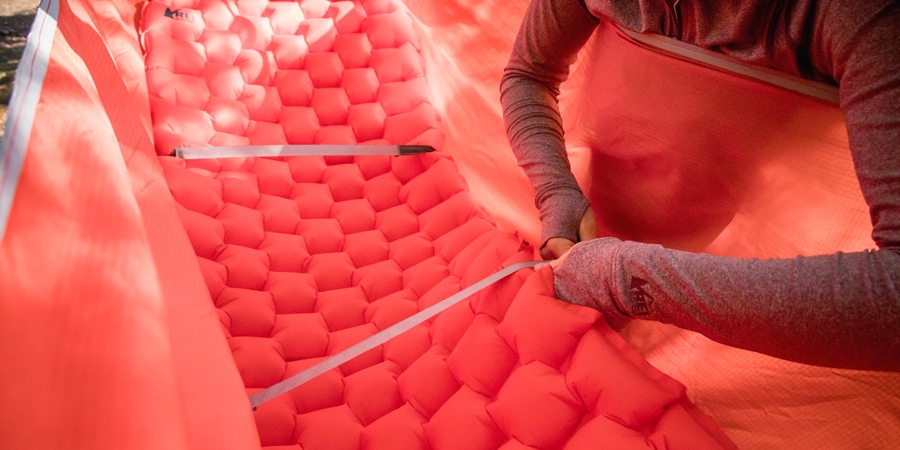
Sleeping pad: Whether you're in a tent or a hammock, the underside of your lofty sleeping bag gets compressed and loses its insulation value when you lie on it. In a tent, the solution is to use an inflated or foam sleeping pad. You can use a pad in a hammock, too, though it might not nestle neatly into the hammock's shape.
One option is to get an accessory sleeve to help stabilize your pad. Another tactic is to deflate an air pad slightly to help it better conform to the shape of your hammock. Some people take a closed-cell foam pad and cut it to fit, which is inexpensive, effective and provides wind resistance.
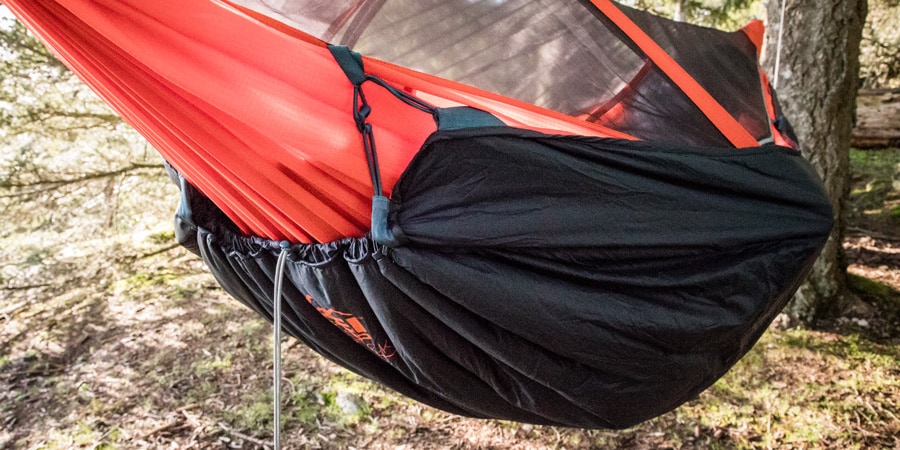
Underquilt: Because a hammock wraps around you, a lot of your underside is exposed to the cold. Thus a better (albeit pricier) solution than a sleeping pad is an underquilt. Because it hangs outside and below, an underquilt's insulation doesn't compress and can loft fully to provide plenty of warmth. Read What is an Underquilt? for more details.
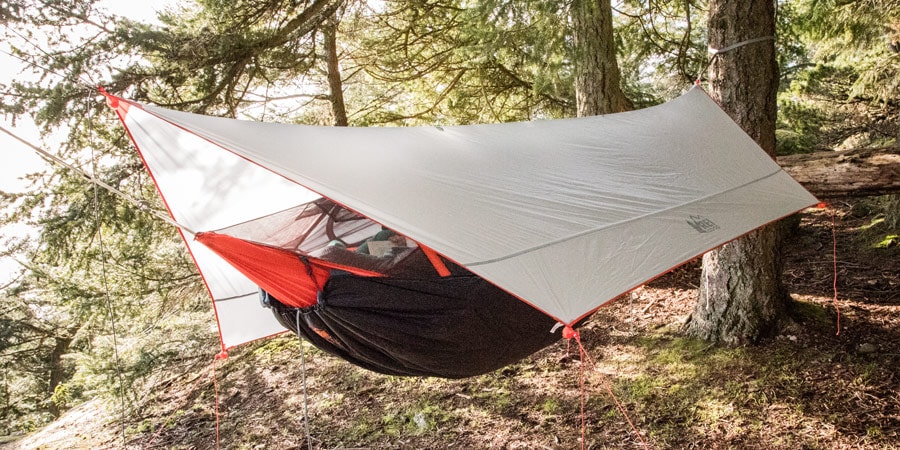
Rain tarp (or rainfly): Typically mounted over a ridgeline that you tie between the trees above your hammock, this is the hammock equivalent of a rainfly for a tent. If you're not buying one specifically designed for hammocks, make sure the option you choose will give you enough attachment points so you can secure the tarp in place where you want it.
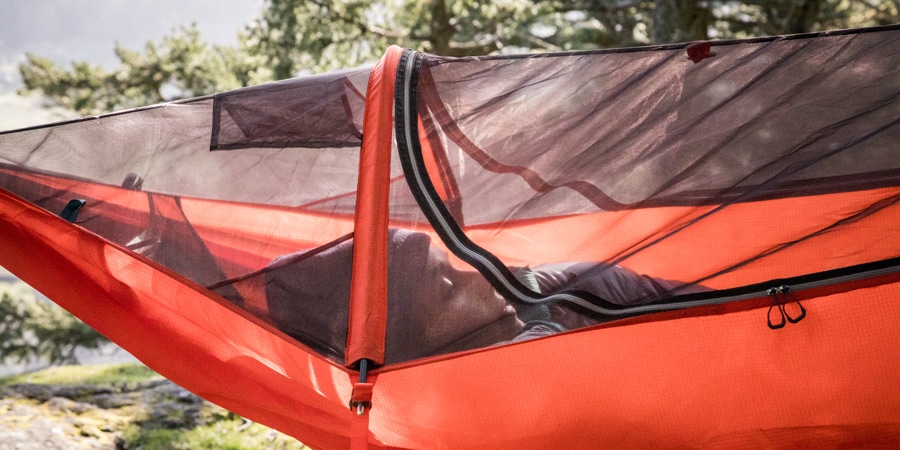
Bug net: Many nets that you can buy for hammocking will fit over your whole hammock, while some only fit over the top. If you have a top-only net, your sleeping bag and pad will provide some bug defense underneath, but you might also consider treating the bottom of the hammock with a fabric-safe insecticide like permethrin.
How to Set Up a Hammock For Camping
Being a proper hammock camper means following a few simple guidelines:
1. Choose an appropriate spot to set up your hammock. That means checking with land managers to see if hammocks are allowed, and what the guidelines are if they are allowed. It also means following tent-camping Leave No Trace principles, like setting up 200 feet or more from a water source and always using an already established campsite.
2. Be a good tree steward. Pick healthy, robust trees (6 inches in diameter or more for most trees) and use straps at least 0.75 inches wide (1.5 inches wide is even better, and a few parks mandate 2-inch-wide straps). Other anchor points, like sturdy structural elements on a vehicle or a building, are also a possibility. Make sure the trees you choose don't have any signs of nests or other creatures making their homes there.
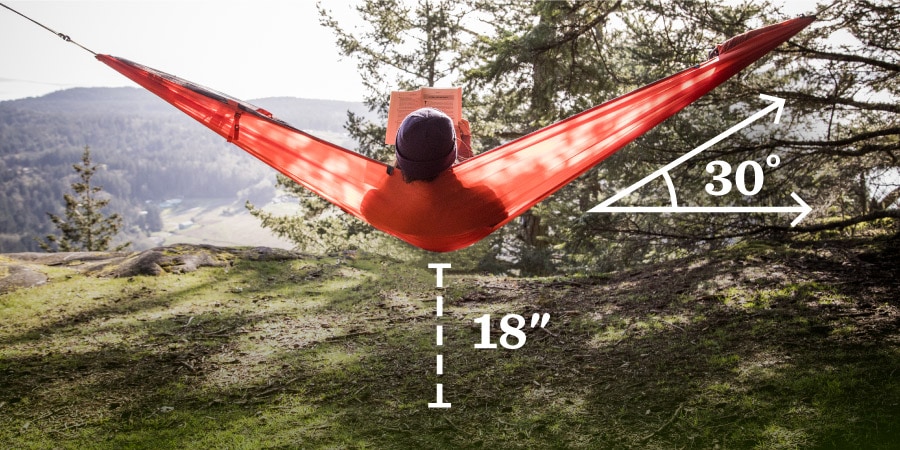
3. Use your geometry skills. Most people find that a hammock that's too flat or too bent won't be comfortable. The ideal setup is to have the straps angle up at about a 30-degree angle toward the tree. The low point of the hammock should be no higher than about 18 inches off the ground.
How to Set Up Rain and Bug Shelters for Your Hammock
Set up a ridgeline: A ridgeline is a line that runs above the hammock to suspend a tarp. The line can also be used to hang things like an organizer pocket. Bring a length of cord that's longer than your hammock, and has enough additional length to secure around both anchor points for your hammock. (A few hammock systems might include a ridgeline.) Attach the cord above your hammock, using the same anchor points.
Ridgeline height can vary, though lower is better when wind-driven rain is a possibility. In calm weather, some people choose to put the ridgeline high enough so they can stand up under their rain tarp. For helpful tips, check out the ridgeline setup section of How to Set Up an Ultralight Tarp Shelter.
Secure your rain tarp: Details vary with different models of hammock tarps, but the basic process involves keeping tension at the points where it's touching the ridgeline, and staking it out along the perimeter of the tarp.
Attach your bug net: Again, the details will vary depending on the design of your bug net. Many versions attach to your hammock strap on one end; then you temporarily unclip the hammock and slide the net over your hammock. After the net is fully extended, secure it to the hammock strap on the other end. The final step is to add another ridgeline through a series of loops on the top of the net. Access to the hammock is usually via a zippered opening at the net's midway point.
Tips for Sleeping Comfortably in a Hammock
- Lie slightly off kilter. If your body is canted 10 to 15 degrees away from the centerline, the fabric under you will flatten out a bit and you won't feel like the hammock is swallowing you.
- Find the right pillow: Many people find that the lip of the hammock serves as a perfect-size headrest. If that doesn't work for you, then experiment with a small pillow or stuff sack filled with perhaps a puffy jacket. Large pillows don't tend to work well for most people.
- Stash your essentials: You can place a small stuff sack with nighttime necessities inside your hammock with you. Another option is to put things in a gear sling accessory that sets up within arm's reach below your hammock (inside your bug net). Note that the area under your hammock also functions like the vestibule of a tent, offering additional covered storage for larger items like boots or your pack.
What About "Tree Tents"?
Some suspended tent systems go beyond simply alternative hammock shapes. Read The Rise of the Suspension Tent for an overview of other creative approaches to this elevated shelter category of gear.
